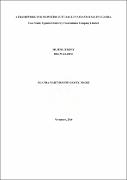| dc.description.abstract | This study was about the development of a framework for Information and Communication
Technology (ICT) usage in the parastatals in Uganda. It involved reviewing literature on the
challenges that parastatals facing in using of information and communication technologies. It
also involved a review of the different ICT usage approaches that are currently in use.
Questionnaires, interviews and focus group discussions and observations were used to collect
data. To analyse the collected data Colaizzi’s (1978) framework for data analysis was used
during the study. The public utility sector was considered as a case study with a focus on
Uganda Electricity Transmission Company Limited (UETCL). The analysis results indicated
that UETCL faces a number of challenges in utilization of ICTs. These challenges include; a
lack of management and organization support to ensure that ICT is utilized, uncoordinated and
unplanned ICT adoption, a lack of the full implementation of the ICT policy document, lack of
awareness of the diffusion processes of ICT into organizational culture, lack of a holistic ICT
selection, design and implementation plan, a lack of a structured needs assessment.
The main objectives of this research were to review the existing frameworks for ICT usage and
thus extend one of the most appropriate existing frameworks to build a proposed framework
for ICT usage among parastatals in Uganda which would eventually lead to formulation of a
proposed framework promoting ICT usage.
Based on the findings of this study, an adoption and utilization framework was developed. The
developed framework is an extension of Technology Organization Environment (Tornatzky
and Fleischer: 1990) framework.
The different stages of TOE framework were improved using constructs adopted from other
adoption and utilization approaches including, Diffusion of Innovations theory, Technology
Acceptance Model, Theory of Perceived Benefits of the ICT and other theoretical and
conceptual studies carried out.
The developed framework is expected to help parastatals realize improved efficiency in public
service delivery provision. Thus more research still needs to be carried out in these areas with
emphasis on Uganda and other developing countries.
The findings of the study pointed to various new approaches of ICT adoption and utilization
through consideration of the three factors of the technology, the organization and the
environment within which the parastatal operates in.
xii
This framework was found to be appropriate and useful in its applicability within the parastatals
in Uganda for adoption and utilization of ICT in their business processes aiming at improving
the service delivery
As a recommendation, this research study can be further validated by more experts in enterprise
architecture to make it even more refined to parastatals and expounded on it to build a
framework for that can be further extended to cater for the very infant stage of ICT
implementation in Uganda. | en_US |


